Virtual Innovation Lab: a new collaborative space for co-creating green VET solutions

The GreenVET4U project introduces the Virtual Innovation Lab (VIL) — a dynamic, collaborative space designed to connect VET providers and practitioners from Uganda and EU countries. This virtual lab fosters creativity, dialogue, and joint project development, all in support of one shared goal: driving innovation in vocational education for green jobs. Whether through brainstorming ideas, sharing resources, or outlining projects together, members of the Community of Practice (CoP) and their invitees are now working side by side — asynchronously and in real time — to co-create new VET project ideas tailored to real challenges across Africa and Europe. Inside the Virtual Innovation Lab, participants can: Share reflections on common VET challenges in Uganda and Europe Brainstorm and track solutions to skills mismatches and green transition needs Co-develop project ideas Access and work with the GreenVET4U Competence Matrix on Design and Delivery of Innovative Curricula in Skills for Green Jobs Contribute to a growing resource wiki with funding opportunities and good practices Collaborate through meeting notes, calendars, and a dedicated discussion board If you’re a new member of the Community of Practice (CoP) or have been invited to join the Virtual Innovation Lab, start by visiting the Welcome section. There you can add your profile and explore the calendar of upcoming meetings. Once inside, you’ll be able to connect with peers and make full use of all collaborative tools the Lab has to offer. You can access the Virtual Innovation Lab from the “Project Results” section of the GreenVET4U website.
New competence matrix for designing green VET curricula now available
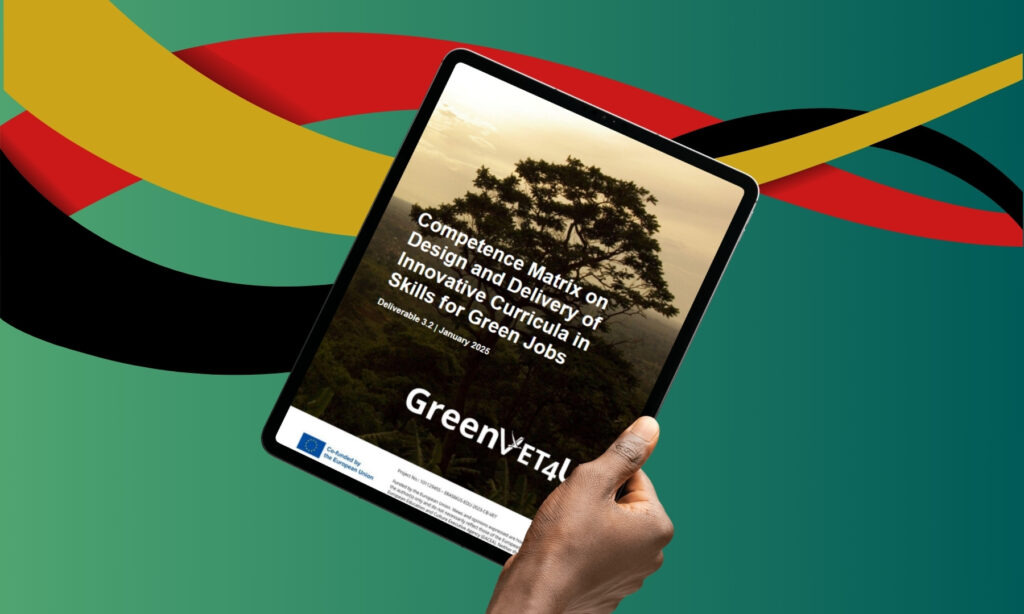
The GreenVET4U project has just published one of its most essential tools to date: the Competence matrix on design and delivery of innovative curricula in skills for green jobs. This comprehensive reference document lays out, for the first time, the set of competences that VET practitioners and in-company trainers in Uganda need to design and deliver training programmes truly aligned with the green jobs of tomorrow. It’s not just a technical framework—it’s a response to real needs, shaped by Uganda’s local context and grounded in both national priorities and international best practices. The matrix is built around six strategic areas of competence, each one broken down into focused Units of Learning Outcomes. These units define, in concrete terms, what trainers need to know, do, and manage when developing effective green curricula—covering everything from business–education partnerships and labour market analysis, to digital learning, inclusion, and quality assurance. What makes this matrix especially valuable is its structure: it doesn’t offer vague recommendations, but instead provides clear, assessable learning outcomes along with performance criteria and descriptors for knowledge, skills, responsibility, and autonomy. This means it’s not only informative—it’s usable. Behind its development is a thoughtful, collaborative process. The project team analysed leading European frameworks (like GreenComp, EntreComp, DigiComp, and EQAVET), filtered them through Uganda’s specific challenges and potential, and translated them into something that speaks to the day-to-day realities of Ugandan VET professionals. Whether you’re a curriculum designer, a trainer, or someone shaping policy, this matrix is designed to support real change in how green skills are taught and learned. And it’s flexible. The matrix aligns with levels 5 and 6 of the European Qualifications Framework, meaning it can support both technical profiles and more strategic, leadership roles in training institutions. By using this tool, VET professionals in Uganda will be better equipped to develop training that promotes sustainability, entrepreneurship, and inclusion—while helping young people access meaningful employment in a growing green economy. You can download the Competence Matrix at this link or find it in the Project Results section of our website.
GreenVET4U Newsletter | April 2025

Our newest edition is now available, featuring project highlights, recent activities, and key reflections on green skills and vocational training in Uganda. Don’t miss out on updates, partner news, and what’s coming next in GreenVET4U. Click below to read it! Download the Newsletter
A strategy to connect skills, jobs, and sustainability in Uganda
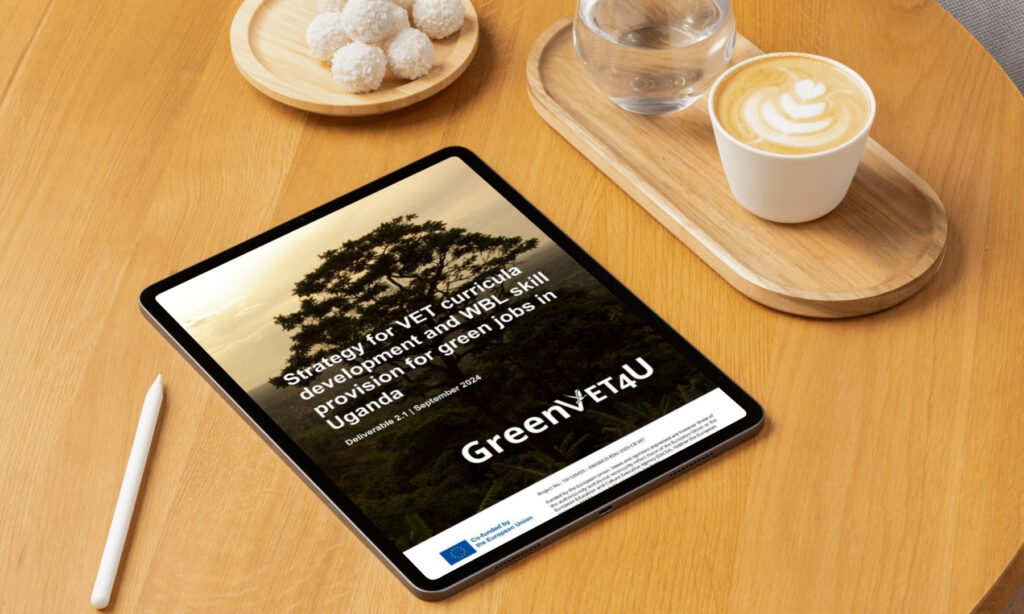
GreenVET4U has released a foundational document to guide the transformation of vocational education and training in Uganda: the Strategy for VET curricula development and Work-Based Learning (WBL) skill provision for green jobs in Uganda. This strategy responds to a pressing reality: Uganda’s VET system must evolve to meet the challenges—and possibilities—of a green economy. With a growing youth population and high unemployment, especially among the most vulnerable, the need to rethink how skills are delivered is more urgent than ever. And this document is a key step in that direction. Firmly grounded in Uganda’s own development roadmap—like the TVET Policy (2020), the National Development Plan III, and the Uganda Green Growth Development Strategy (UGGDS)—it also reflects shared priorities with the European Union, including green growth, education reform, and empowering young people. This isn’t just a policy paper—it’s a practical, forward-looking guide. It identifies six strategic competence areas that should steer future curriculum development and training efforts across the VET sector: Strengthening collaboration between education providers and businesses, to co-create training and ensure quality work-based learning Translating labour market needs into real occupational profiles and relevant training Encouraging green entrepreneurship and innovative mindsets in the classroom Embedding digital skills and tools into both curriculum design and assessment Promoting inclusion, civic responsibility, and shared values in learning spaces Building stronger quality assurance systems and improving how learning is validated Each of these areas will inform the development of flexible, outcome-based learning units tailored to Uganda’s green sectors. The strategy also outlines how Work-Based Learning can become a central pillar of green skills development. It recommends adaptable learning formats—from apprenticeships to community-based projects—and provides guidance on how to involve employers meaningfully, support learners, and ensure placements lead to real learning. This document sets the tone for what comes next in GreenVET4U. It offers a clear vision and a set of actionable principles to help vocational training in Uganda grow into something more inclusive, more relevant, and much more future-facing. You can access the full strategy at this link or directly from the Project Results section of our website.
GreenVET4U project partners hold their third in-person meeting in Valladolid
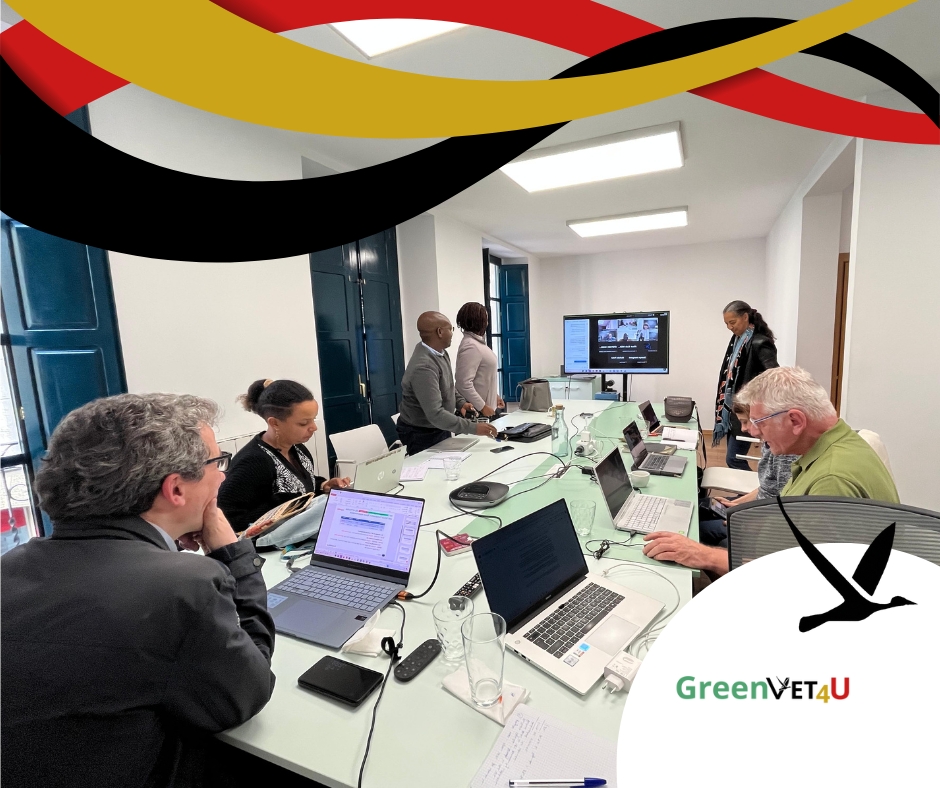
The third transnational partners meeting of the GreenVET4U project took place from April 8 to 10 in Valladolid, Spain. Partners from Uganda, Spain, Italy, and Germany came together in person to discuss the outcomes of completed tasks, present the current status of ongoing work, and plan the launch of new activities across different work packages. The meeting began with a study visit to the 4th Vocational Education and Training Forum of Castilla y León, held at the Feria de Valladolid auditorium. Guided by INFODEF, hosts of the TPM3, project partners had the chance to attend one of the forum sessions, which brought together VET professionals and experts at the regional, national, and European level. Key speakers included Joachim James Calleja, President of EfVET and VET consultant; José Manuel Galvín, Senior VET Expert at the European Training Foundation; and Alicia Gabán, Project Manager at the European Association of Regional and Local Authorities for Lifelong Learning (EARLALL). On April 9, GreenVET4U partners attended roundtable discussions focused on the challenges of dual training, skills mismatches, and mobility and internationalisation in the VET sector. Jesús Boyano, Director of INFODEF, took part in the roundtable on internationalisation at the forum. The day also included a visit to the regional Skills Competition, which promotes vocational education as a strong path for both learning and career development. The competition showcased the high level of technical and professional excellence among VET students. More than 200 students from the region demonstrated their skills in various areas including hairdressing, bricklaying, mechatronics, automotive technology, pharmacy, visual merchandising, culinary arts, and renewable energy. Project partners had the opportunity to meet the organisers, visit participating VET centres, and observe how different VET pathways are promoted and delivered.
Next steps in supporting green skills development in Uganda

GreenVET4U continues to move forward, and April will be an important month for the project. In a few weeks, our partners will meet in Valladolid (Spain) for the Third Transnational Partners Meeting, where we will share updates, exchange feedback, and refine our joint initiatives. Soon, we will also be sharing the Competences Matrix on Design and Delivery of Innovative Curricula in Skills for Green Jobs, a framework designed to help VET educators develop programs tailored to the evolving green job sector. Alongside this, we will publish the Benchmarking Analysis of European Frameworks of Reference, providing a comparative study that will serve as a reference for new training approaches. Looking ahead, we will launch the Online Platform, a key step in supporting the continuous professional development of VET practitioners and in-company trainers. This platform will provide access to e-learning courses, the Guide on Digital Competencies for Virtual Learning, and the Lessons Plan, all essential tools to enhance green skills training in Uganda.
Greening the future: Redefining curriculum design for green jobs
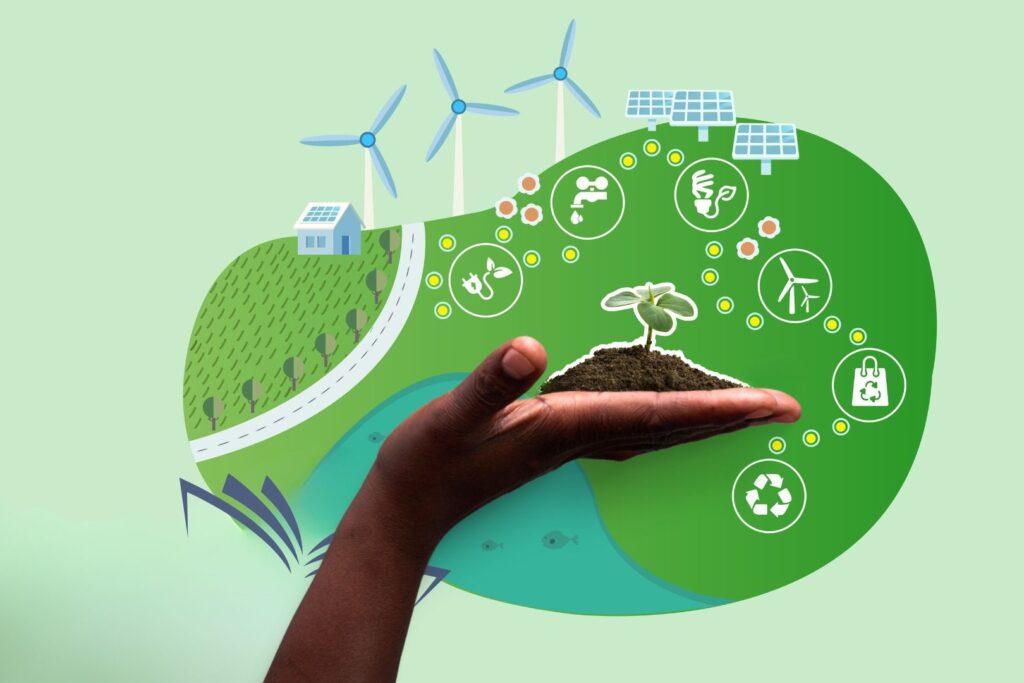
As global economies pivot towards sustainability, the demand for green jobs has grown significantly. Vocational Education and Training (VET) systems have a critical role to play in preparing learners for this green transition. Designing curricula that address the specific needs of jobs in the green transition requires innovative approaches that not only equip learners with technical skills but also foster environmental awareness, adaptability, and innovation. Below, we explore some cutting-edge strategies for curriculum design that align with the demands of the green economy. 1. Integration of green skills across disciplines One of the most effective ways to prepare students for green jobs is to integrate green skills into existing VET programs. Rather than treating sustainability as a standalone subject, it can be woven into courses such as construction, agriculture, energy, and automotive repair. For example, construction courses can include modules on energy-efficient building techniques and the use of sustainable materials, while automotive programs can focus on electric vehicle maintenance. 2. Focus on competency-based learning Green jobs often require workers to possess specific, practical competencies—such as knowledge of renewable energy systems or waste management processes. Competency-based learning ensures that students acquire these practical skills through hands-on training and real-world applications. This approach emphasizes measurable outcomes, ensuring that learners are work-ready upon completion. 3. Incorporation of Work-Based Learning (WBL) Work-based learning is a cornerstone of effective VET programs and is particularly relevant for green jobs. By partnering with eco-conscious businesses and organizations, VET institutions can provide students with opportunities to apply their skills in real-world settings. For instance, students can intern with renewable energy companies or participate in projects focused on sustainable agriculture. 4. Leveraging digital tools and e-learning platforms The use of technology in education is reshaping how skills are taught. Digital tools and e-learning platforms can be utilized to provide interactive, immersive learning experiences. For example, virtual simulations can teach students about energy-efficient building design, while online modules can cover topics like climate change and sustainability practices. These tools also make training more accessible, especially in remote or underserved areas. 5. Emphasis on lifelong learning The green economy is dynamic, with new technologies and practices emerging regularly. To stay relevant, workers in green jobs must commit to lifelong learning. VET curricula can incorporate this principle by offering flexible learning pathways, including micro-credentials and modular courses. These allow workers to upskill or reskill as needed, ensuring they remain competitive in the job market. 6. Collaborative curriculum development Engaging stakeholders in the curriculum design process is essential for ensuring relevance and alignment with market needs. Industry experts, environmental organizations, and policymakers can provide valuable input on the skills and knowledge required for green jobs. Collaborative curriculum development ensures that VET programs address current and future demands in the green economy. 7. Incorporating European and international standards To enhance the mobility of learners and workers, VET curricula should align with European and international standards. This includes incorporating frameworks such as the European Qualifications Framework (EQF) and embracing principles of sustainability outlined in the United Nations’ Sustainable Development Goals (SDGs). Such alignment not only prepares learners for local job markets but also opens doors to global opportunities. 8. Promoting innovation and critical thinking Green industries require innovative solutions to complex environmental challenges. VET programs should encourage critical thinking and creativity by incorporating project-based learning and problem-solving activities. For example, students might design a community recycling initiative or develop a plan for reducing energy consumption in local businesses.
Explore and share the GreenVET4U project leaflet
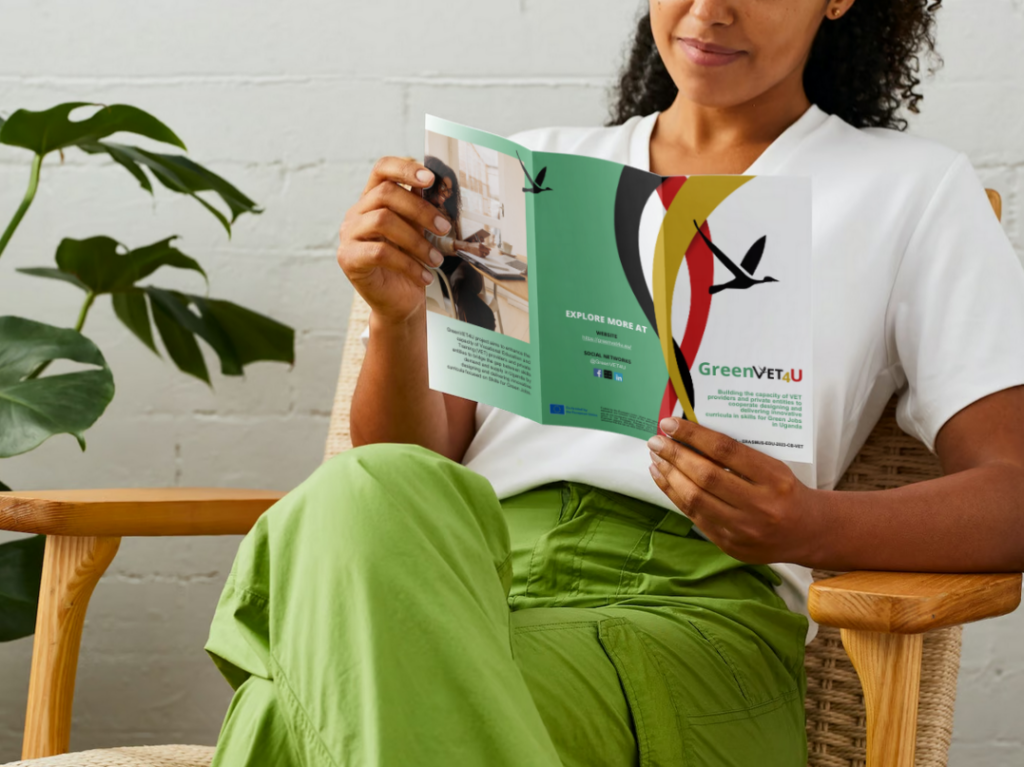
We are excited to share the official leaflet of the GreenVET4U project! This resource provides an overview of our project, objectives and project results to promote green skills and sustainable job opportunities through Vocational Education and Training (VET) in Uganda. Explore how we aim to build a greener future by enhancing skills, fostering innovation, and creating new opportunities for growth. 📥 [Download the GreenVET4U brochure here] Feel free to share this resource with your networks and help us amplify the impact of GreenVET4U. Together, we can drive the change for a sustainable future!
Empowering Uganda’s youth: Green skills for a thriving economy

Despite Uganda’s immense potential for economic and social transformation, systemic barriers continue to hold back its progress. Making the most of this young workforce by offering the right skills and opportunities will decide whether Uganda can turn its youth into a driving force for sustainable growth or continue to face the challenges of untapped potential. Employment quality is low for most young Ugandans, according to the Uganda Bureau of Statistics (UBOS). This results into the majority of young people and the country failing to make the most out of their economic potential. Young people aged 15 to 29 with disabilities are up to five times more likely to be outside the educational system and not in employment or training than their peers without disabilities, according to the International Labour Organization. The latest UBOS labour market report concludes that Uganda’s population is growing at 3% per annum. Uganda is currently the 4th youngest country globally, with 75% of the population aged 30 years or younger. There is need to harness this demographic dividend by equipping the young people with the right skills, creating jobs and fully utilising their productive potential. It’s also important to strengthen partnerships between the public and private sectors to meet both national and international goals focused on decent work and moving the economy from informal to formal. Addressing these challenges, the GreenVET4U project emerges as a key initiative. By focusing on developing green vocational skills, the project not only aims to bridge the skill gaps but also ensures that the youth are prepared for the demands of the green economy. The initiative specifically prioritizes inclusivity, fosters sustainable job creation and contributes to Uganda’s transition toward an environmentally conscious economy. By aligning with Uganda’s Vision 2040 and the Sustainable Development Goals (SDGs), GreenVET4U has the potential to drive transformative change. It promises to empower young Ugandans, to unlock their full potential while addressing critical environmental and social challenges.
GreenVET4U Newsletter | October 2024
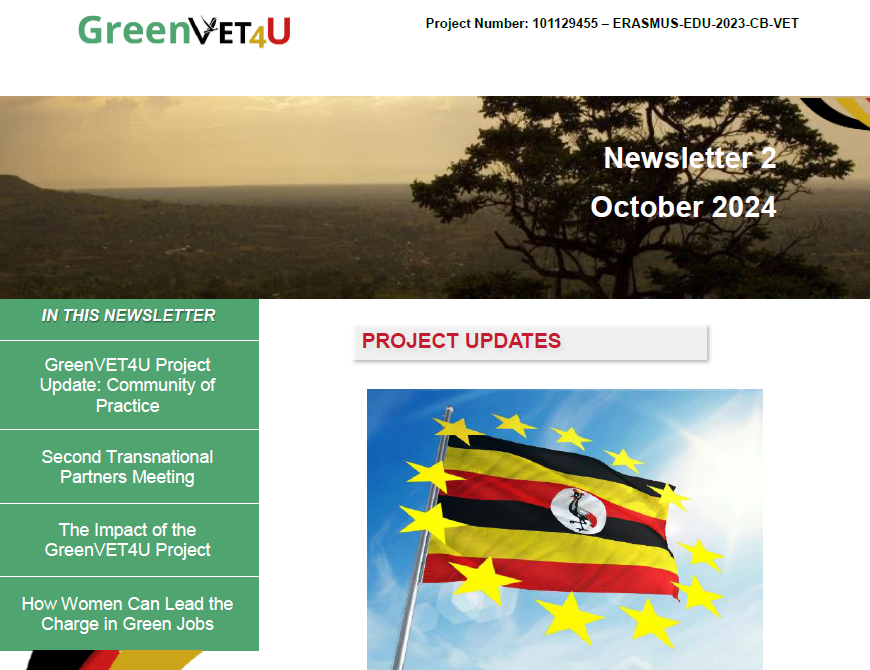
In our second edition of the GreenVET4U newsletter, we dive deeper into how our project is fostering green skills development in Uganda. This issue includes exciting updates on recent activities,and insights on the growing green jobs sector. Stay informed about our progress and upcoming events by downloading the full newsletter. Simply click the button below to access it! Download the Newsletter

